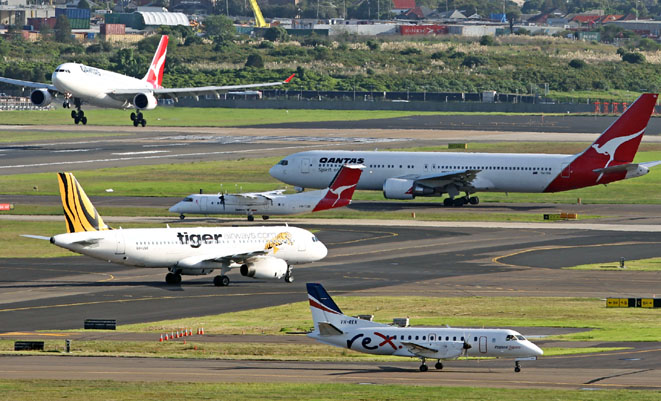
The 2012/13 capacity surge that in large part left both Australia’s major carriers swimming in red ink slowed to a trickle in 2013/14, giving hope that the aviation sector can return to profitability this year.
Figures from the Bureau of Infrastructure, Transport and Regional Economics (BITRE) showed Australia’s domestic carriers added 1.4 per cent more seats in the 12 months to June 30, 2014, compared with the prior corresponding period.
Capacity as measured by available seat kilometres rose 2.3 per cent in 2013/14.
The increases were a significant slowdown from the prior year, where available seats rose 7.9 per cent and available seat kilometres rose 7.3 per cent.
Both Qantas and Virgin Australia posted hefty full year losses in 2013/14 and the two airline groups cited the influx of extra seats in a jittery market unable to absorb the capacity additions as a big reason for their poor financial results.
However, Qantas has flagged no capacity growth across its Qantas and Jetstar operations over the first six months of 2014/15 and targeted a return to profitability in the first half of the financial year.
“There is a clear and significant easing of both international and domestic capacity growth, which will stabilise the operating environment,” Qantas chief executive Alan Joyce said on August 28.
“We therefore anticipate a rapid improvement in the group’s financial performance in financial year 2015.”
While Virgin declined to give profit or capacity guidance, the airline group also noted there were signs capacity growth was slowing.
“Capacity is starting to moderate in FY15,” Virgin chief executive John Borghetti said on August 29.
“Now that is a good thing obviously because there is far too much of it. The unknown quantity within that though is if the capacity moderates what is the mix within that capacity.
“If it moderates but there is a bigger proportion of the bottom end of the market then that creates a ripple effect right up the fare ladder so it drags everybody down.”
Load factors – an industry measure of how full planes are – on regular public transport flights fell 0.7 percentage points in 2013/14 to 76 per cent.
The BITRE report said load factors fell on 30 of the 56 RPT routes for which there was data available in both 2013/14 and 2012/13.
Separately, the report said there were 5.3 million charter passenger movements in 2013/14, up 12.4 per cent from 4.8 million in the prior year.
The total number of domestic charter aircraft movements fell 4.8 per set to 111,474, suggesting charter operators were using larger aircraft to ferry staff to their worksites.










